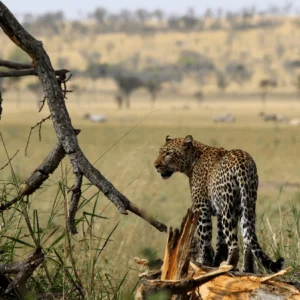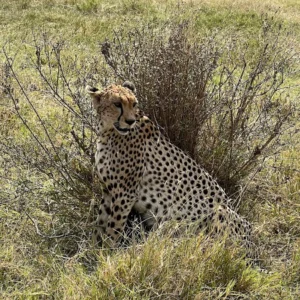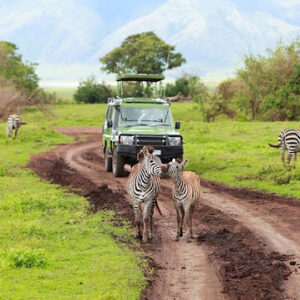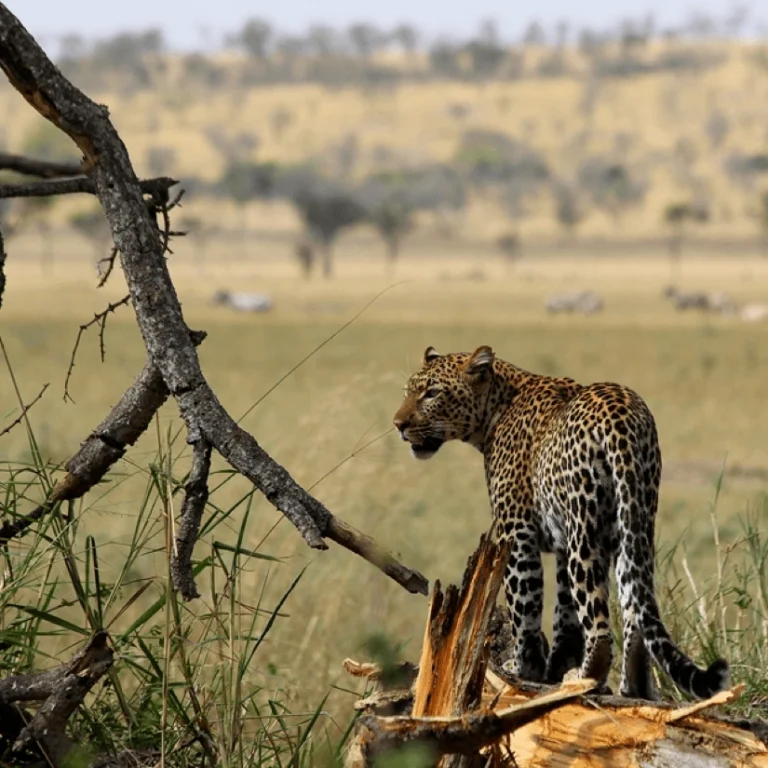The Heath/Moorland Zone of Mount Kilimanjaro – What’s it Like?
The Heath/Moorland Zone of Mount Kilimanjaro is a fascinating ecological belt located between the lush rainforests at lower elevations and the stark alpine deserts higher up. It stretches from roughly 9,200 feet (2,800 meters) to 13,200 feet (4,000 meters) above sea level. Temperatures in the heath/moorland zone average around 50 degrees Fahrenheit (10 degrees Celsius) during the day and can dip below freezing at night.
This zone is a transitional area, and the vegetation reflects that.
The lower part of the heath zone is often compared to the Scottish Highlands. With scrubby shrubs, heather, and tussock grasses. As you climb higher, the temperatures drop, and the characteristic plants. Of this zone become more prominent – the giant lobelias and senecios. These plants have evolved unique features to survive the harsh conditions. Such as the furry coat of dead leaves on the senecios that insulates the plant.
The Heath/Moorland Zone of Mount Kilimanjaro is a fascinating ecological belt situated just above the lush rainforests and below the stark alpine deserts. Let’s delve into its characteristics and environmental significance:
Characteristics of the Heath/Moorland Zone:
- Heath: Typically found in temperate regions, heath environments consist of open, uncultivated land with poor soils. These conditions support the growth of shrubs like heather and other low-growing, woody vegetation. Heathlands are associated with lower precipitation and moisture levels, resulting in lower humidity conditions.
- Moorland: Found in upland areas, moorland experiences higher levels of precipitation and retains more moisture in the soil. This leads to higher humidity levels. Moorlands support a mix of vegetation types, including grasses, mosses, and heather. They can even include blanket bogs and peatlands.
- Vegetation: In the heath/moorland zone, plant life is sparsely distributed. It tends to be hardier and more drought-resistant than in lower zones, adapted to cooler temperatures and lower moisture levels.
- Wildlife: Wildlife is less abundant than in the rainforest, with smaller mammals. Bird species, and insects living among the thin vegetation and open spaces. This zone typically ranges from an altitude of about 2800 to 4000 meters above sea level.. Characterized by its expansive stretches of low vegetation. Including heather, tussock grasses, and scattered shrubs.
The Environmental Role of the Heath/Moorland Zone:
- Water Regulation: Heath and moorland zones play a crucial role in water regulation. Peaty soils in moorlands act as natural sponges, absorbing rainfall and releasing it slowly over time. This helps regulate river flows and reduces flood risk downstream.
- Water Quality: These areas filter pollutants and sediments as water moves through the soil, contributing to cleaner rivers and lakes.
- Carbon Sink: Peatlands, common in moorland zones, are essential carbon sinks. The peat soil captures and stores carbon dioxide, mitigating climate change.
- Soil Protection: The vegetation cover protects the soil from erosion. Heather and other moorland plants’ roots bind the soil, reducing the impact of wind and water erosion.
Mount Kilimanjaro’s Heath/Moorland Zone:
This zone stretches from 9,200 feet (2,800 meters) to around 13,200 feet (4,000 meters) on Kilimanjaro.
Temperature: Average daytime temperatures hover around 50°F (10°C), dipping below freezing at night.
Annual Precipitation: Low rainfall Ranges from 51 to 21 inches (1,300 to 530 mm).
- Ascending through the different ecological zones of Mount Kilimanjaro
Travelers are greeted by the unique charm of the Heath/Moorland Zone. The transition from the dense rainforest below to the stark alpine desert above is marked by this intermediate zone. Offering a glimpse into the diverse ecosystems that thrive on Africa’s tallest peak.
The cool, crisp air of the heath, tinged with the scent of wildflowers. Provides a refreshing respite for trekkers making their way to the summit. The vast expanse of open terrain allows for uninterrupted views of the surrounding landscape. With the snow-capped peak of Kilimanjaro looming majestically in the distance.
Tips for Tackling Kilimanjaro’s Heath/Moorland Zone
For those embarking on the adventure of climbing Mount Kilimanjaro. Proper preparation is key to ensuring a safe and enjoyable journey through the Heath/Moorland Zone. Here are some essential tips to help you tackle this part of the trek:
- Stay Hydrated: The dry air and high altitude can lead to dehydration. So be sure to drink plenty of water throughout the day.
- Dress in Layers: The weather in the heath/moorland zone can be unpredictable. With temperatures ranging from warm and sunny to cold and misty. Dressing in layers allows you to adjust your clothing to changing conditions.
- Take it Slow: Climbing at high altitude requires acclimatization, so take your time and listen to your body. It’s essential to pace yourself and avoid overexertion.
- Protect Against the Sun: Even on cloudy days, the sun’s rays can be strong at high altitudes. Wear sunscreen, sunglasses, and a wide-brimmed hat to protect yourself from sunburn.
- Follow Your Guide: If you’re trekking with a tour operator, listen to the advice of your guide. They have experience navigating the mountain and can help ensure your safety.
What to Expect in the Heath/Moorland Zone of Mount Kilimanjaro
As you venture into the Heath/Moorland Zone of Mount Kilimanjaro, you’ll encounter a landscape unlike any other. The vast expanses of open terrain. Dotted with rugged rock formations and interspersed with patches of vibrant vegetation, create a scene of breathtaking beauty.
The cool, dry air of the heath, coupled with the gentle rustling of grasses in the wind. Creates a sense of tranquility and serenity. The silence of the mountain is broken only by the occasional chirping of birds or the distant rumble of thunder as clouds gather on the horizon.








